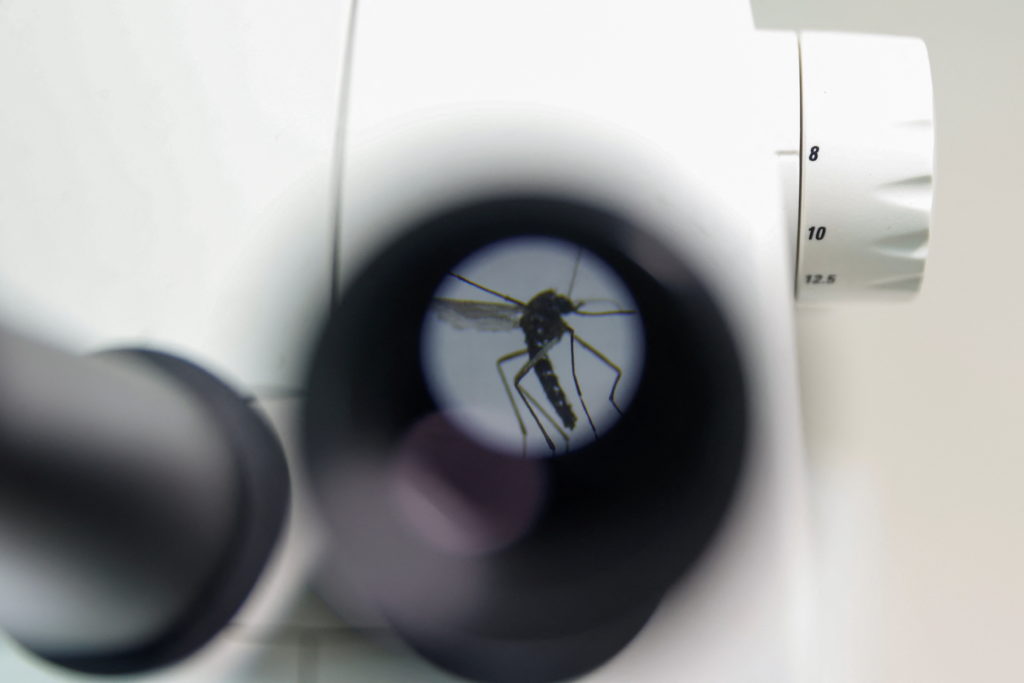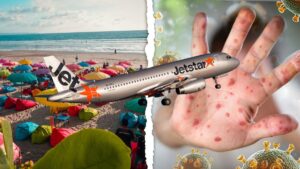
A tiger mosquito (Aedes albopictus) is photographed through a 20x optical microscope, in Moncada, Spain July 19, 2024. REUTERS/Eva Manez
A resident of the New York City suburbs has tested positive for chikungunya, a mosquito-borne virus more commonly found in South America. This marks the first locally acquired case on the U.S. mainland in a decade. Health officials have confirmed that the virus, which often causes fever and joint pain, was identified in a Long Island patient who began experiencing symptoms in August. Notably, the patient had not traveled outside the country, raising questions about local transmission.
The confirmation of this case comes amidst growing concerns about mosquito-borne diseases in the United States. Although the virus has not been detected in local mosquito pools, and it does not spread directly from person to person, officials are urging caution. The patient is believed to have contracted the virus from a mosquito bite, although the exact location of transmission remains unclear.
Understanding Chikungunya
Chikungunya is a viral disease first identified in Tanzania in 1952. The name derives from the Makonde language, meaning “that which bends up,” a reference to the severe joint pain it can cause. The virus is transmitted by infected mosquitoes, primarily the Aedes species, and typically results in mild symptoms. Most individuals recover without medical intervention within one to two weeks.
Symptoms and Severity
Common symptoms of chikungunya include fever, muscle pain, nausea, fatigue, and rash. In rare instances, the virus can lead to debilitating joint pain lasting months or even years. Severe cases, which may require hospitalization due to the risk of organ damage, are uncommon and primarily affect infants and elderly individuals with pre-existing health conditions.
The World Health Organization reports that severe cases and deaths are rare, occurring mostly in vulnerable populations.
Treatment and Prevention
Currently, there is no specific treatment for chikungunya. Healthcare providers focus on alleviating symptoms through medications that reduce fever and ease muscle pain. While two vaccines have been approved in regions such as Britain, Brazil, Canada, and Europe, they are mainly aimed at travelers and are not widely available in areas most affected by the virus.
Global and Local Occurrences
Chikungunya is endemic in Africa, Asia, and the Americas, with sporadic outbreaks in Europe. According to the European Centre for Disease Prevention and Control, as of August, there have been approximately 317,000 cases worldwide this year, with 135 fatalities across 16 countries and territories. Brazil, Bolivia, Argentina, and Peru have reported the highest infection rates.
The U.S. Perspective
The recent case in New York is the first locally acquired instance in the U.S. since 2015. Historically, a similar case was recorded in Texas a decade ago, and two cases were noted in U.S. territories in 2019. This is the first time a locally acquired case has been detected in New York, according to the state Health Department.
Transmission occurs when a mosquito bites an infected traveler, becomes infected, and subsequently bites another person. The Aedes albopictus mosquito, known to transmit chikungunya, is present in parts of downstate New York. Health officials recommend preventive measures such as wearing long sleeves and eliminating standing water to reduce mosquito breeding grounds.
State Health Commissioner James McDonald stated that current colder nighttime temperatures in New York significantly lower the transmission risk.
Increasing Outbreaks
Globally, the frequency of chikungunya outbreaks has risen since 2000, paralleling the increase in other mosquito-borne diseases like dengue and Zika. Robert Jones, an assistant professor at the London School of Hygiene and Tropical Medicine, noted that the virus was first identified in the Caribbean in 2013, with subsequent cases reported in nearly 50 countries across the Americas.
Jones attributes the heightened risk of chikungunya epidemics to factors such as climate change and urban expansion.
As public health officials continue to monitor the situation, the emergence of chikungunya in New York underscores the importance of vigilance against mosquito-borne diseases. The Centers for Disease Control and Prevention has tracked numerous travel-related infections in the U.S., with 199 cases in 2024 and 152 in 2023.
The Associated Press Health and Science Department, supported by the Howard Hughes Medical Institute’s Department of Science Education and the Robert Wood Johnson Foundation, emphasizes the role of a free press in fostering informed public discourse.






